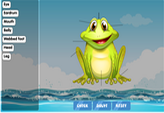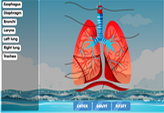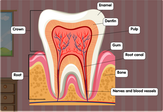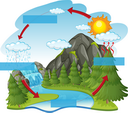Diagram of a flower labelling quiz
Flowers are bright, blooming things that bring life to any scene, but they also serve a vital role in nature. Many plants that we use for food, construction or shelter are grown from seeds, and seeds are produced from pollinated flowers.
Labeling Parts of the Flower Interactive Diagram
Nature's beauty is often at its most vivid in the blossoms of flowers. These colorful wonders are more than just pleasing to the eye; they're intricate structures with specialized parts playing essential roles in the process of reproduction. By labeling parts of the flower, young learners can unveil the secrets these botanical gems hold, deepening their connection to the world around them.
Why Flowers Fascinate Us
Beyond their aesthetic allure, flowers are nature's ingenious method of ensuring plant propagation. Each part of a flower has a specific function, and understanding these parts offers a glimpse into the incredible world of plant biology. Utilizing a diagram to label the parts of the flower brings this vibrant world to life.
Embarking on a Floral Expedition
Using a flower diagram for labeling is like embarking on an explorative journey. Here are some of the key landmarks you'll encounter:
Petal: These are the colorful parts of a flower that attract pollinators.
Stamen: This is the male reproductive part, comprising the anther and filament.
Pistil: The female reproductive part of a flower, it consists of the stigma, style, and ovary.
Sepal: These green, leaf-like parts protect the budding flower.
For young botanists eager for a hands-on experience, this flower labeling quiz is an exceptional way to label parts of a flower and test their budding knowledge.
Digging Deeper into Floral Anatomy
Beyond the basic landmarks, the flower has more nuanced parts to discover:
Ovary: Located within the pistil, it houses the ovules.
Ovule: The part that, once fertilized, becomes the seed.
Anther: Part of the stamen, it produces pollen.
Filament: Holds up the anther, allowing it to effectively spread its pollen.
Benefits of Understanding Flower Parts
Holistic Understanding: Breaking down and labeling the flower's parts provides a detailed understanding of plant reproduction.
Interactive Engagement: Label diagrams cater to visual learners, making the learning experience more vivid.
Memory Enhancement: Engaging with parts of a flower labels reinforces memory and retention.
Exploring More Wonders of Science
The botanical world is just one of the countless intriguing realms within science. Once young learners have mastered the secrets of flowers, there's an entire universe of knowledge awaiting their exploration. The Science Games section on ESL Games Plus offers a plethora of interactive activities to ignite young curiosities and fuel their passion for discovery.
Conclusion
Flowers, with their bursts of color and intricate structures, serve as an ideal introduction to the vast realm of botany. By delving into the process of labeling parts of the flower, children can cultivate a deeper appreciation for these natural wonders and the pivotal roles they play in the circle of life. Embrace this floral journey and watch as the mysteries of plant biology unfold before your eyes!
When we think of flowers, we mostly think of their colourful petals. Petals look pretty for a reason; they attract pollinators such as birds, insects, bats and butterflies to feed on flower’s nutritious pollen.
Many flowers possess both male (stamen) and female (pistil) reproductive systems, and can fertilize themselves with the help of pollinators. Pollen is produced by the male parts, and kept on sticky tips called anthers. When pollinators come, some pollen is collected by the pistil, which initiates fertilization in the ovary at the base of the flower.
When the ovules in an ovary are fertilized, several changes occur. The flower will appear to die as the petals wither and fall off, while the ovary begins to enlarge. This process eventually leads to the creation of the flowering plant’s fruits and seeds.
This diagram of a flower labelling quiz can help you improve in identifying the different parts of a flower and better relate them to their corresponding functions in pollination and plant reproduction.











